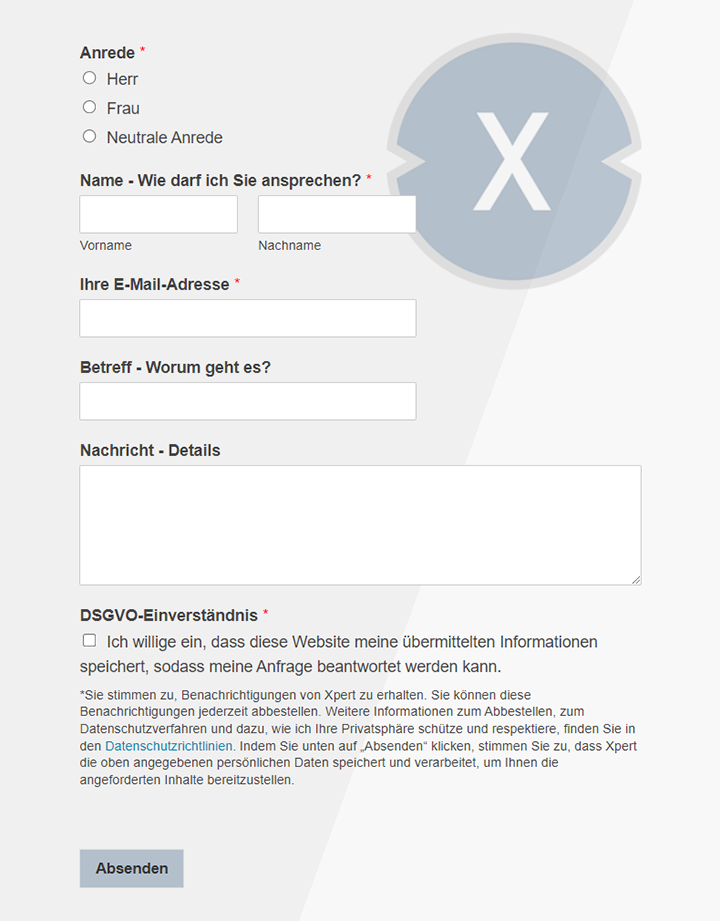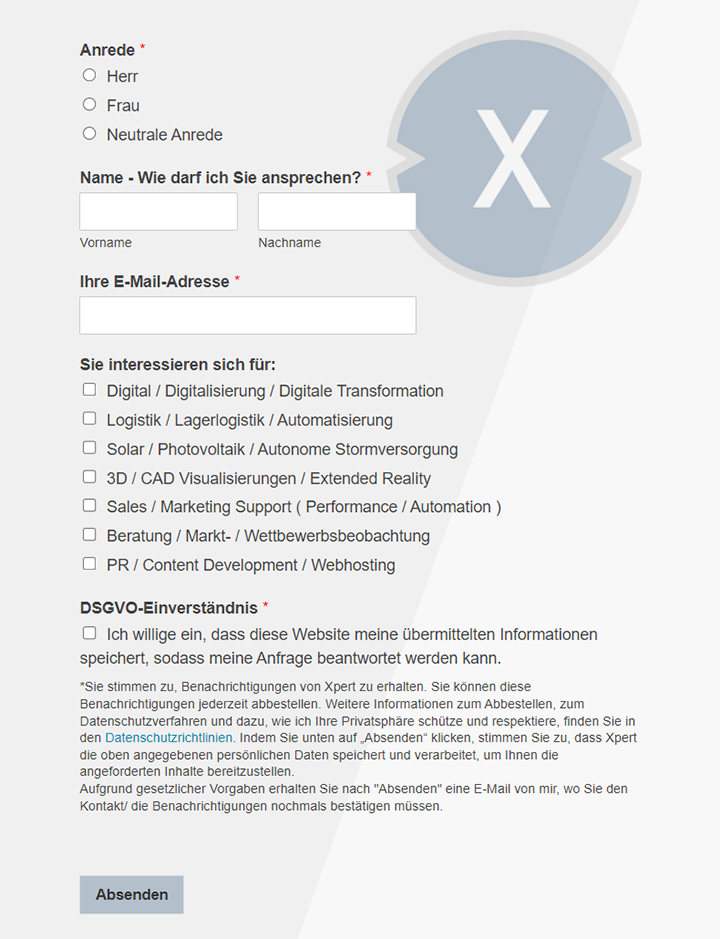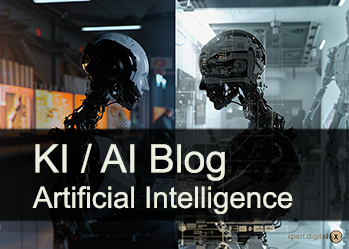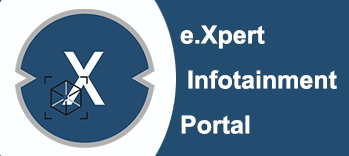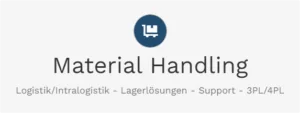Salesforce AI: Why independent AI platforms are better than Einstein and Agentforce-hybrid approach beats Vendor Lock-In!
Xpert pre-release
Language selection 📢
Published on: April 25, 2025 / update from: April 25, 2025 - Author: Konrad Wolfenstein

Salesforce AI: Why independent AI platforms are better than Einstein and Agentforce-hybrid approach beats Vendor Lock-In! - Image: Xpert.digital
Strategic options for AI integration in Salesforce: self-solution vs. third-party provider
The strategic importance of independent AI platforms in Salesforce: an analysis beyond Einstein
Salesforce prominently positions its native artificial intelligence (AI) as an integral part of its Customer 360 platform and advertises them as the “#1 ai for CRM”. The core message emphasizes the seamless integration of AI functions such as Einstein, Agentforce and the more comprehensive AI cloud in the existing Salesforce workflows in order to increase productivity and personalize customer experiences. This promise of simple implementation and use within a familiar environment is attractive for many companies.
However, Salesforce customers are increasingly facing a strategic decision: Should you rely exclusively on the native Ki suite from Salesforce or consider integration more independent, more potentially specialized AI platforms? The AI market develops rapidly, and external providers are continuously highly specializing models and innovative solutions that may go beyond the skills of an all-in-one platform.
This article analyzes the strategic advantages of using independent AI platforms within the Salesforce environment. He critically examines the skills and limits of the native Salesforce AI, illuminates integration paths and challenges and addresses central aspects such as flexibility, costs, data protection and provider dependency. The aim is to create a well-founded basis for the decision whether a more open AI strategy for Salesforce users could be more advantageous than the sole use of the Salesforce-owned solutions.
The key question is about weighing up the convenience of a deeply integrated solution and the potential performance and specialization of external AI tools. While Salesforce emphasizes the advantages of its integrated AI, the high specialization and fast innovation speed in the AI area requires a differentiated view. A single platform provider may not offer top performance in all AI domains, compared to providers who focus on specific areas. This tension between integration and “best-of-breed” forms the core of the strategic considerations that are examined in this report.
Suitable for:
Understand the native Ki suite of Salesforce (Einstein, Agentforce, Ai Cloud)
Salesforce offers a wide range of AI functions that are deeply integrated into its various cloud products and are combined under the brand names Einstein, Agentforce and AI Cloud. This suite aims to optimize everyday business processes through automation, predictions and personalized interactions.
Functional overview of Cloud
- Sales Cloud: Core functions include the evaluation of leads and opportunities based on their probability of graduation (Einstein Lead/Opportunity Scoring), more precise sales forecasting, the automatic creation of personalized sales emails (sales emails), the summary of sales talks (call summaries) and the automatic recording of activities from Emails and calendars (Einstein Activity Capture). The Einstein Copilot also offers context -related actions and support in the sales process.
- Service Cloud: Here KI supports the automatic classification of customer processes (Case Classification), recommends suitable knowledge articles or prefabricated answers (Article/Reply Recommendations), creates summaries of completed cases (Work Summaries) and enables the use of chatbots to automate standard requests.
- Marketing Cloud: AI functions help with the creation and automatic keyword of marketing content (content generation/tagging), evaluate the probability of interaction of contacts (engagement scoring), optimize shipping times for maximum opening rates (send time optimization) and enable profound personalization of campaigns and customer experiences.
- Commerce Cloud: In this area, AI focuses on personalized product recommendations, the optimization of the search results and the provision of insights into the buying behavior to increase the conversions.
- Completely/general: Tools such as the Einstein Prediction Builder enable administrators to create custom predictive models without code. Einstein Discovery helps to find patterns and insights in data. Einstein Next Best Action delivers context -related recommendations for action. Agentforce represents autonomous AI agents who can carry out tasks independently. Builder and Copilot Studio promptly allow the adaptation and creation of AI-controlled assistants and prompts.
Suitable for:
Underlying architecture
The functionality of the Salesforce AI is based on two essential columns: the data cloud and the Einstein Trust Layer.
Data cloud dependency
The Salesforce Data Cloud acts as a central data foundation. It unites customer data from various sources (Salesforce internal and external) in a 360-degree perspective. These harmonized data are the basis for many AI applications, especially for generative AI and personalization. It is important that certain generative AI functions and the Audit Trail of the Trust Layer require the provisioning of the Data Cloud, even if it is not used intensively for data harmonization. This creates an architectural dependency and can cause additional complexity and potential costs, especially if companies already have established data warehouses or data lakes. The need for the Data Cloud can thus increase the Total Cost of Ownership (TCO) and represents a potential bottleneck if it is not carefully managed.
Einstein Trust Layer
This security framework is intended to ensure the trustworthy use of generative AI. It includes several components:
- Secure data query: accesses Salesforce data to enrich prompt with a relevant context, whereby the access rights of the respective user are taken into account.
- Defense promptly: System guidelines are intended to reduce hallucinations and harmful expenditure of the voice models (LLMS).
- Data masking: Sensitive data such as personal information (PII) or payment information (PCI) are masked before sending to external LLMS.
- Toxicity assessment: The generated answers are checked and evaluated for potentially harmful content.
- Zero-Data Retention Policy: Salesforce has made agreements with partners such as Openaai and Azure Openai, which should ensure that transmitted company data is neither stored by these third-party providers nor used for training their models.
A closer look at the architecture, however, reveals that Salesforce is used for many of its generative AI functions to external Large Language Models (LLMS) of providers such as Openaai, Anthropic or Google. These models are often integrated via cloud services such as AW's threat. The Einstein Trust Layer acts as a safe gateway. This means that Salesforce acts primarily as an integrator and security broker instead of only developing your own basic generative models. Although this enables access to powerful models, it creates dependencies and raises the question to what extent the core AI technology differs from the direct use of these models via other platforms. Customers thus pay salesforce for integration, the security level and embedding in workflows, which are based on largely external AI models. This strengthens the argument of evaluating direct integration with these external models or platforms.
Recognized strengths of the native solution
Despite the points mentioned, the Native Salesforce Ki Suite offers undeniable advantages:
- Seamless integration: The AI functions are deeply embedded in the Salesforce user interface and the work processes, which enables smooth use.
- User-friendliness and familiarity: Existing Salesforce users and administrators are usually quickly found, which shortens the training period. Low code tools also allow non-technical users to create AI-based experiences.
- Use of existing CRM data: The AI is designed to work directly with the customer data stored in Salesforce, which can simplify data processing.
🎯🎯🎯 Benefit from Xpert.Digital's extensive, fivefold expertise in a comprehensive service package | R&D, XR, PR & SEM

AI & XR 3D Rendering Machine: Fivefold expertise from Xpert.Digital in a comprehensive service package, R&D XR, PR & SEM - Image: Xpert.Digital
Xpert.Digital has in-depth knowledge of various industries. This allows us to develop tailor-made strategies that are tailored precisely to the requirements and challenges of your specific market segment. By continually analyzing market trends and following industry developments, we can act with foresight and offer innovative solutions. Through the combination of experience and knowledge, we generate added value and give our customers a decisive competitive advantage.
More about it here:
Independent AI platforms: More flexibility and control for companies
Arguments for independent AI platforms in Salesforce
Although the native integration of Salesforce AI offers advantages, several important reasons speak to seriously consider the integration of independent AI platforms. These external solutions can be superior in areas such as flexibility, specialization, adaptability and potential cost advantages.
Flexibility and model specialization
The AI market is characterized by a high dynamic and specialization. Independent AI providers often concentrate on specific domains or technologies and can therefore offer more progressive or tailor-made solutions in certain areas than a generalistic platform such as Salesforce.
Access to “Best-of-Breed” models
External providers often develop highly specialized algorithms for areas such as natural language processing (NLP), computer vision or industry -specific analyzes. Examples of this are specialized AI for legal documents such as contractpodai or industry -specific diagnostic tools such as aquant. Such specialized models can exceed the performance of the more general models integrated by Salesforce.
Faster innovation cycles
Dedicated AI companies can often develop and publish new models and functions faster than a large platform provider such as Salesforce, whose AI roadmap is bound to broader release cycles. This enables companies to benefit faster from the latest AI progress.
Larger variety of model
Independent platforms or marketplaces offer access to a wider range of models, including niche solutions, open source options or models of providers that are not available directly via Salesforce's “Bring Your Own Model” (BYOM) function.
Suitable for:
This specialization of external providers is contrasting to the broader approach of Salesforce, which aims to provide basic AI functions across the entire CRM suite. While this “width” approach ensures that AI is available in many areas, this can be at the expense of the depth. A specialized fraud index or a medical image analysis tool will probably exceed a general CRM-integrated model for these specific tasks. Companies with critical requirements in specialized AI domains could find that the native Salesforce-KI is not sufficient. Independent platforms make it possible to select the best tool for the respective task instead of satisfying yourself with the potentially only “sufficient” native solution.
Adaptation and control
Independent AI platforms often offer a higher level of control over the entire AI life cycle, from data preparation to model implementation and monitoring.
Deeper model-fin tuning
External platforms are often designed for machine learning engineers and offer granular control over the training and the fine-tuning of models. This goes beyond the possibilities of the more abstracted low-code tools from Salesforce such as the Einstein Prediction Builder or the restrictions on the fin tuning of imported models (byom) within Salesforce.
Algorithm selection and transparency
Users have more freedom when choosing specific algorithms and potentially receive more transparency about the functionality of the models (explanability, explainability) than through the abstraction layers of Salesforce. Although Salesforce offers tools such as the Model Inspector, external MLOPS tools are often more comprehensive.
Control over the Ki-Stack
The administration of the entire AI pipeline (data preparation, training, provision, monitoring) on platforms such as AWS or Google Cloud offers more control than the dependency on the managed environment of Salesforce.
Salesforce adaptation limits
While Salesforce offers low-code builder for easy adjustment, external platforms often enable deeper, code-based adjustments. There are also specific functional restrictions on Salesforce AI functions, such as complex requirements or when adjusting Einstein Activity Capture, as well as general platform limits.
Potential cost advantages
The cost structures for AI solutions can vary considerably and a purely comparison of the license fees is often not sufficient.
Different pricing models
Salesforce often licenses his AI functions per user and month as an add-on to the existing cloud licenses. In contrast, prices for independent AI platforms are often based on the actual consumption (computing time, memory, API calls). Independent AI providers can in turn have their own, possibly more flexible price models. The byom option in Salesforce can reduce the costs for Einstein Requests, but the underlying costs of the external model provider continue to be incurred.
Total cost of ownership (TCO)
A comprehensive TCO analysis is crucial. While the native integration of Salesforce-KI can reduce the initial integration costs, other factors can increase the total costs: the potential necessity of data cloud licenses or use, the relatively high pro-user costs for ADD-on and the possibility of paying an surcharge for AI models that would be cheaper available. The TCO for independent AI must include the integration costs, but can benefit from lower core AI usage costs and the use of existing cloud infrastructure. Agentforce is also described as potentially costly in use ($ 2 per conversation).
Avoidance of redundancy
The use of independent AI can enable companies to use existing investments in other cloud platforms or their own data infrastructures and thus avoid redundant expenses within the Salesforce Ecosystem.
Salesforce Native KI vs. Independent AI: A comparison of functions and flexibility

Salesforce Native KI vs. Independent AI: A comparison of functions and flexibility - Image: Xpert.digital
Salesforce native AI, such as Einstein or Agentforce, and independent AI platforms that often use specialized or open models differ significantly in their functions and flexibility. While Salesforce Native AI is focused on generalistic approaches and CRM applications, independent platforms often offer specialized models and a broader selection, including open source options. Access to the latest models at Salesforce depends on release cycles and partnerships, while specialized providers enable potentially faster updates. With regard to fine-tuning, native Salesforce models are often limited and abstracted, for example by tools such as prediction builder, whereas independent platforms offer more detailed control over the training process. The choice of specific algorithms is limited at Salesforce, since they are mostly predefined or related to partners, while independent platforms offer more freedom. The infrastructure is also fully managed at Salesforce and is often based on AWS or GCP, while independent platforms allow direct access to hosting environments, be it in your own cloud or on-premises. The integration effort at Salesforce is low because the solutions are native, while external platforms require more development and configuration work. With regard to the costs, Salesforce often relies on a user-based price model per month as an add-on, while independent platforms often use consumption-dependent prices, such as based on compute performance or API calls, or provider-specific models.
Navigation of the integration: Connect independent AI with Salesforce
The decision for an independent AI platform requires careful planning of integration into the existing Salesforce environment. There are different methods to establish this connection, each with your own advantages and challenges.
Integration methods
Appexchange / agentexchange
The Salesforce Appexchange offers a variety of third-party applications, including AI solutions that often offer prefabricated integration. Agentexchange is a newer marketplace that is aimed at AI agent skills, topics and templates from partners and is intended to accelerate the provision of AI agents. This is often the easiest way, but requires that a suitable partner offers a solution.
APIS (Rest/Soap/Bulk/Streaming)
The direct use of the Salesforce APIS enables tailor -made integration. Developers can exchange data, trigger processes in Salesforce or play back results from external AI models. The Composite API can help bundle several operations efficiently. This method offers maximum flexibility, but requires significant development effort.
Middleware platforms (e.g. Mulesoft)
Integration platforms such as Mulesoft (Salesforce's own solution) or others can serve as an intermediary. They take on tasks such as data transformation, orchestration of complex workflows and the management of connectivity between Salesforce and external AI services.
Cloud platform connectors (AWS/GCP)
Large cloud providers are increasingly providing specific services to facilitate integration with Salesforce. Examples are AWS Private Connect for secure network connections, AWS Event Relay for real-time event transmission, the AWS Glue Salesforce Connector or the Sagemaker Data Wrangler Connector for data processing. Google Vertex AI can be integrated into the Salesforce Data Cloud via the model Builder. These connectors can simplify the integration, but bind to the ecosystem of the respective cloud provider.
Byom about Einstein studio
As already mentioned, this function enables the integration of externally hosted models to the Salesforce environment via the Model Builder. The inquiries continue to run via the Salesforce infrastructure and use the Trust Layer, which simplifies integration, but also creates a certain dependency.
Suitable for:
- Integration of AI and machine learning in warehouse logistics - global developments in Germany, EU, USA and Japan
Frequent integration challenges
The integration of external systems with Salesforce is not trivial and contains specific challenges:
API limits
Salesforce limits the number of API calls per organization and period (e.g. daily, at the same time). Data-intensive AI processes that often synchronize or query data can quickly reach these limits. This requires careful design (e.g. throttling, batch processing, caching) or can make the acquisition of higher salesforce editions or additional API contingents necessary. The limits of streaming API in particular are relevant for real-time applications.
Data synchronization
Ensuring data consistency between Salesforce and the external AI platform is critical. Challenges include the handling of large data volumes (LDV), the decision between real-time and batch updates, the management of latency times and avoiding data inconsistencies. Approaches such as zero-copy integrations aim to reduce these problems may not always be applicable.
Data mapping and transformation
Different data models, formats and field semantics must be coordinated. This can require complex transformation logic to ensure that data is interpreted correctly.
Security and authentication: The secure management of access data (API key, tokens), the implementation of robust authentication methods (e.g. Oauth 2.0, Named Creditials) and ensuring secure data transmission (encryption) are essential. Malcons can lead to security gaps.
Troubleshooting and data consistency
Integrations must be resistant to errors (network problems, system failures, data errors). Robust mechanisms for logging, monitoring and automatic repeating attempts (retry logic) are necessary to ensure data integrity and minimize downtimes.
Complexity and maintenance
Tailor-made integrations require continuous maintenance and adaptation, especially if Salesforce or the external AI platform develop. This binds resources and requires technical know-how.
The complexity of the integration represents an often underestimated cost factor. While independent AI platforms may offer lower nuclear costs or superior functions, the costs and effort for integration-including development time, potential middleware licenses and ongoing maintenance-must flow into the TCO calculation. The Native AI of Salesforce benefits from the prefabricated integration. API limits can further increase the complexity and costs if elaborate workarounds or more expensive licenses are required. Therefore, the decision for an independent AI must take into account the technical skills and resources of the organization to cope with this integration complexity. A poorly planned integration can destroy the advantages of the external platform.
Successful integration pattern
Despite the challenges, there are established patterns and tools for successful integrations. Case studies show the successful connection of AWS Sagemaker to Salesforce, often using specific AWS services to optimize performance and costs. Similar integrations are possible with Google Vertex AI, especially via the model Builder. Tools such as Zapier can be used for simpler, code-free integrations to move data between systems, e.g. between Google Sheets and Vertex AI as a proxy for Salesforce data. The use of cloud native connectors and services such as AWS Glue, Eventbridge or Private Connect can also simplify and secure integration considerably.
Independent AI platform: Integration methods & challenges at an overview
The independent AI platform offers a wide range of integration methods, each bringing specific advantages and challenges. Appexchange or agentexchange apps enable easy installation of prefabricated applications or components of partners with little development effort and frequently certified quality. However, adaptability is limited and there is a dependency on partner offers and potential costs. Direct API integration that enables tailor-made developments using the Salesforce APIs such as the rest, soap, bulk and streaming, offers maximum flexibility and full control over the data flow and logic. However, it requires a high level of development, the management of API limits, a thorough security test and continuous maintenance. The use of middleware such as Mulesoft simplifies complex integrations through connectivity, data conversion and orchestration. It offers central administration and reusability, but requires additional license costs and intensive familiarization into the platform. Cloud connectors such as AWS or GCP optimize integrations through specific, partly low code services such as glue, event relay or private connect. These are mostly powerful, safe and perfect for the respective cloud ecosystem, but require specialized configurations and bind the user to the provider. With byom via Einstein Studio, external hosted models can easily be integrated into Salesforce workflows, whereby the trust layer is used and integration is simplified. However, there are restrictions in model support compared to direct use, fine adjustment and the dependence on the Salesforce platform.
🎯📊 Integration of an independent and cross-data source-wide AI platform 🤖🌐 for all company matters

Integration of an independent and cross-data source-wide AI platform for all company matters-Image: Xpert.digital
Ki-Gamechanger: The most flexible AI platform-tailor-made solutions that reduce costs, improve their decisions and increase efficiency
Independent AI platform: Integrates all relevant company data sources
- This AI platform interacts with all specific data sources
- From SAP, Microsoft, Jira, Confluence, Salesforce, Zoom, Dropbox and many other data management systems
- Fast AI integration: tailor-made AI solutions for companies in hours or days instead of months
- Flexible infrastructure: cloud-based or hosting in your own data center (Germany, Europe, free choice of location)
- Highest data security: Use in law firms is the safe evidence
- Use across a wide variety of company data sources
- Choice of your own or various AI models (DE, EU, USA, CN)
Challenges that our AI platform solves
- A lack of accuracy of conventional AI solutions
- Data protection and secure management of sensitive data
- High costs and complexity of individual AI development
- Lack of qualified AI
- Integration of AI into existing IT systems
More about it here:
Independent AI systems vs. Salesforce Trust Layer: A comparison of data security
Critical considerations: risk management for independent AI
The decision for or against independent AI platforms must also include careful consideration of potential risks, especially in the areas of data protection, provider dependency and data sovereignty.
Privacy and security
While Salesforce positions the Einstein Trust Layer as a guarantee for safe AI use, practical restrictions are revealed on a closer look that must be weighed up compared to independent solutions.
Einstein Trust layer restrictions:
Deactivated data masking for Agentforce: A central point is the explicit determination that data masking for agentforce workflows is deactivated. As a reason, it is stated that the masking would affect the contextual accuracy and relevance of the results, for example when looking for similar accounts, where the details of the reference account are required. This represents a considerable risk of data protection, since potentially sensitive customer data could be sent unmasked to external LLMs, which is particularly problematic in regulated industries and contradicts the “trust” promise.
Alternative mitigation (Anthropic): Salesforce plans to offer alternative anthropic models that run within a “Salesforce Trusted Boundary” (hosted on AWS Bedrock). Although the data does not leave the Salesforce control sphere, the data masking remains deactivated here too. It is questionable whether this data protection concerns addressed sufficiently, compared to a functioning masking.
General Trust Layer Functionality: The core functions such as zero retention in partners and toxicity test remain. However, the exception to Agentforce is a significant restriction.
Potential advantages of independent platforms:
Dedicated data residence options: Independent cloud providers or specialized platforms may offer more granular control over the storage and processing location of data. This may be necessary to meet strict regional data protection laws (such as GDPR or specific national regulations) that go beyond the general assurances of Salesforce Hyperforce.
Alternative security architectures: Companies can choose architectures that better match their specific security requirements, e.g. through dedicated encryption, stricter access controls or data insulation mechanisms.
Direct provider responsibility: Cooperation directly with a AI provider creates clearer responsibilities for dealing with data, without Salesforce as an intermediate instance.
The gap between the marketing promise of the Trust Layer and its technical reality, in particular the deactivated masking for agentforce, is crucial for risk assessment. Decision -makers cannot rely solely on marketing statements, but must check the specific implementation for their applications and compare this with the more potentially consistent or configurable controls of independent platforms.
Suitable for:
- Trusty AI: Europe's trump card and the chance of taking on a leading role in artificial intelligence
Data protection & security aspects: Einstein Trust Layer vs. Independent platforms

Data protection & safety aspects: Einstein Trust Layer vs. Independent platforms- Image: Xpert.digital
Data protection and security aspects are of central importance for the Einstein Trust Layer from Salesforce and independent platforms. In data masking, the Trust Layer offers support for certain regions and languages, but with a restriction at Agentforce, while independent platforms can provide configurable and customizable rules as well as supported data types. For agent-based workflows, data masking in the Trust Layer is deactivated, while with independent platforms, depending on the implementation, it is often possible if performance losses are tolerable. The zero-data retention among third-party providers is guaranteed by contractual agreements, for example with Openaai; Independent platforms allow direct contracts or hosting to their own infrastructure in order to completely avoid third parties. Audit trails are logged in the trust layer by the data cloud, including toxic content and masking, while independent platforms often offer detailed logging and monitoring functions such as MLOPS tools. When checking the data residence, the Trust Layer depends on the Hyperforce region and the provisioning, whereas independent platforms typically allow a more granular selection of data center regions. At Salesforce, the hosting options range from the provider of self-managed hosting to the byom option to the SF gateway with hosting for partners such as AWS or GCP, although anthropic is also planned in the SF area. Independent platforms, on the other hand, enable hosting in their own cloud instance, on-premises or in the provider cloud. With regard to the granularity of the controls, the Trust Layer offers configurable options, for example to determine the masking rules, whereby the basic architecture is defined; Independent platforms can often provide a more comprehensive configurability of the security measures.
Avoiding Vendor Lock-in
The deep integration of Salesforce services carries the risk of strong dependence on the provider.
Risk of ecosystem dependency
Landing only on Salesforce for CRM and AI creates a significant dependency. This can weaken the negotiating position for price adjustments and restrict flexibility to use other technologies in the future.
Strategic diversification
The use of independent AI platforms diversifies the technology stack. Companies can use innovations from all over the market and, if necessary, change providers more easily. This receives strategic ability to act.
Salesforce's “Open Ecosystem” paradox
Salesforce advertises an open ecosystem, e.g. by byom, but the practical reality of deep integration often leads to a factual bond. Even when using Byom, the administration and provision are carried out via the Salesforce platform, which makes it difficult to change. The convenience of the integrated solution can lead to a “soft lock-in”, since the underlying dependencies are veiled and the change to a different management or deployment strategy causes friction losses.
More about it here:
Sovereignty and portability
Control over your own data and the possibility of migrating models or data if necessary are important strategic aspects.
Concerns at Einstein Activity Capture (EAC)
A specific problem affects EAC. The recorded email and calendar data are not saved as standard activity records in Salesforce, but externally at AWS. This data is subject to a limited retention period (6 months, a maximum of 24 months with a paid license) and are lost when EAC is deactivated. This raises significant questions regarding data sovereignty, long-term access and backup options. In this case you do not have your data completely.
Model portability
Models that are created natively with Salesforce tools such as the Einstein Prediction Builder are tied to the platform and are not easy to portray. While the underlying data can be exported, the trained model itself is not transferable. In contrast, models that were developed on external platforms (AWS, GCP etc.) are more portable, even if they are temporarily integrated with Salesforce.
Data portability with independent AI
When external AI platforms are used, the core data processing and model artifacts often remain outside of Salesforce. This potentially offers better data and model portability if the relationship with Salesforce or the strategy changes.
Strategic recommendations for decision -makers
The choice of the right AI strategy in the Salesforce context requires a differentiated assessment that goes beyond a simple comparison of functions. The following recommendations can help decision -makers:
Use applications critically
Do not rely on native salesforce AI by default. Check each AI application individually based on:
- Required specialization: Does the task need deep, specialized AI skills (e.g. complex scientific analyzes, niche sector forecasts) that are probably better served by a dedicated platform?
- Adaptation needs: How much control over model, training data and algorithms is necessary? Is Salesforce's degree of abstraction enough?
- Performance requirements: Are there strict latency or throughput requirements that may be better met by optimized external infrastructure?
- Data sensitivity & compliance: does the application apply to highly sensitive data in which the restrictions of the Trust Layer (in particular the lack of masking at Agentforce) represent unacceptable risks? Are specific data residence requirements better met?
Pursue a hybrid approach
Consider a strategy that native Salesforce-KI uses for simpler, heavily integrated tasks in which it plays its strengths (e.g. basic lead scoring, email designs in the Sales Cloud). At the same time, independent platforms for high -quality, specialized or highly sensitive use cases should be integrated.
Consider integration maturity
Realistically assess the technical resources and the know-how of the organization to manage the complexity of integration and maintenance of external AI solutions. Start with well-supported integrations (e.g. appexchange, established cloud connectors) before complex in-house developments are addressed.
Calculate complete TCO
Perform a thorough TCO analysis that compares the total costs of the native Salesforce KI (licenses, data cloud use, potential functional restrictions) with those of independent AI (core AI costs + integration development/maintenance + middleware).
TCO analysis (Total Cost Of Ownership) is a method for evaluating the total costs that are connected to the acquisition and operation of a technology across your entire life cycle-not only acquisition costs, but also ongoing operating costs, maintenance, training, upgrades, etc.
Why external AI platforms can be more cost-efficient:
- Scale effects: Providers distribute infrastructure costs to many customers.
- Lower investments: no structure of your own infrastructure is necessary.
- Faster use: Faster time-to-market reduces indirect costs.
- Maintenance & updates included: No own effort for IT operation.
- Pay-as-you-go: costs adapt to the need.
A TCO analysis often shows that external AI platforms are cheaper and more flexible than their own solutions in the long run.
Prioritize strategic flexibility
Weigh the convenience of the integrated Salesforce ecosystem against the long-term strategic risks of provider dependency (see section VB). Install portability considerations from the start into the AI strategy.
Request transparency
Demand clear documentation of all providers (including sales force and independent providers) for model skills, restrictions, data processing practices, security measures and price models. Carefully question marketing statements and compare them with the technical realities.
Suitable for:
Plea for an open AI strategy within Salesforce
The analysis clearly shows that the sole use of the native Ki suite of Salesforce offers convenience and seamless integration into well-known CRM processes, but does not necessarily represent the optimal strategy for every company. The strategic consideration of independent AI platforms opens up significant advantages: access to highly specialized and potentially powerful models, greater flexibility and control over the AI stack, possible cost efficiency through alternative pricing models and the use of existing infrastructure as well as important risk minimization with regard to provider dependency and data sovereignty.
The established restrictions of the Einstein Trust Layer are particularly critical, namely the deactivated data masking for agentforce workflows. This underlines the need to look beyond the marketing promises and to check the technical realities carefully, especially when processing sensitive data. The concerns about data portability, as they are clear from the example of Einstein Activity Capture, also warn for caution if the bond with proprietary memory and processing mechanisms.
At the same time, the role of Salesforce Ai should not be underestimated. For many standard CRM tasks, it offers a valuable, well-integrated solution. The Einstein Trust Layer is an important governance and security level despite its limitations. The low-code tools also enable broader democratization of AI use within organizations.
The most convincing strategy for many companies should therefore be an open, hybrid approach. Such a strategy uses the strengths of the native Salesforce AI for everyday, integrated tasks, but does not shy away from integrating external, “best-of-breed” AI solutions for specific, highly demanding or strategically critical use cases. This requires a departure from the default setting to only use native tools, and instead a rigorous, application -based evaluation.
Decision-makers are asked to carefully determine the right mix of native and independent AI solutions. This decision should be based on the specific business requirements, the existing technical skills, the risk of risk and long-term strategic goals in order to exploit the full potential of AI in the Salesforce ecosystem without taking unnecessary dependencies or risks.
We are there for you - advice - planning - implementation - project management
☑️ SME support in strategy, consulting, planning and implementation
☑️ Creation or realignment of the AI strategy
☑️ Pioneer Business Development
I would be happy to serve as your personal advisor.
You can contact me by filling out the contact form below or simply call me on +49 89 89 674 804 (Munich) .
I'm looking forward to our joint project.
Xpert.Digital - Konrad Wolfenstein
Xpert.Digital is a hub for industry with a focus on digitalization, mechanical engineering, logistics/intralogistics and photovoltaics.
With our 360° business development solution, we support well-known companies from new business to after sales.
Market intelligence, smarketing, marketing automation, content development, PR, mail campaigns, personalized social media and lead nurturing are part of our digital tools.
You can find out more at: www.xpert.digital - www.xpert.solar - www.xpert.plus












